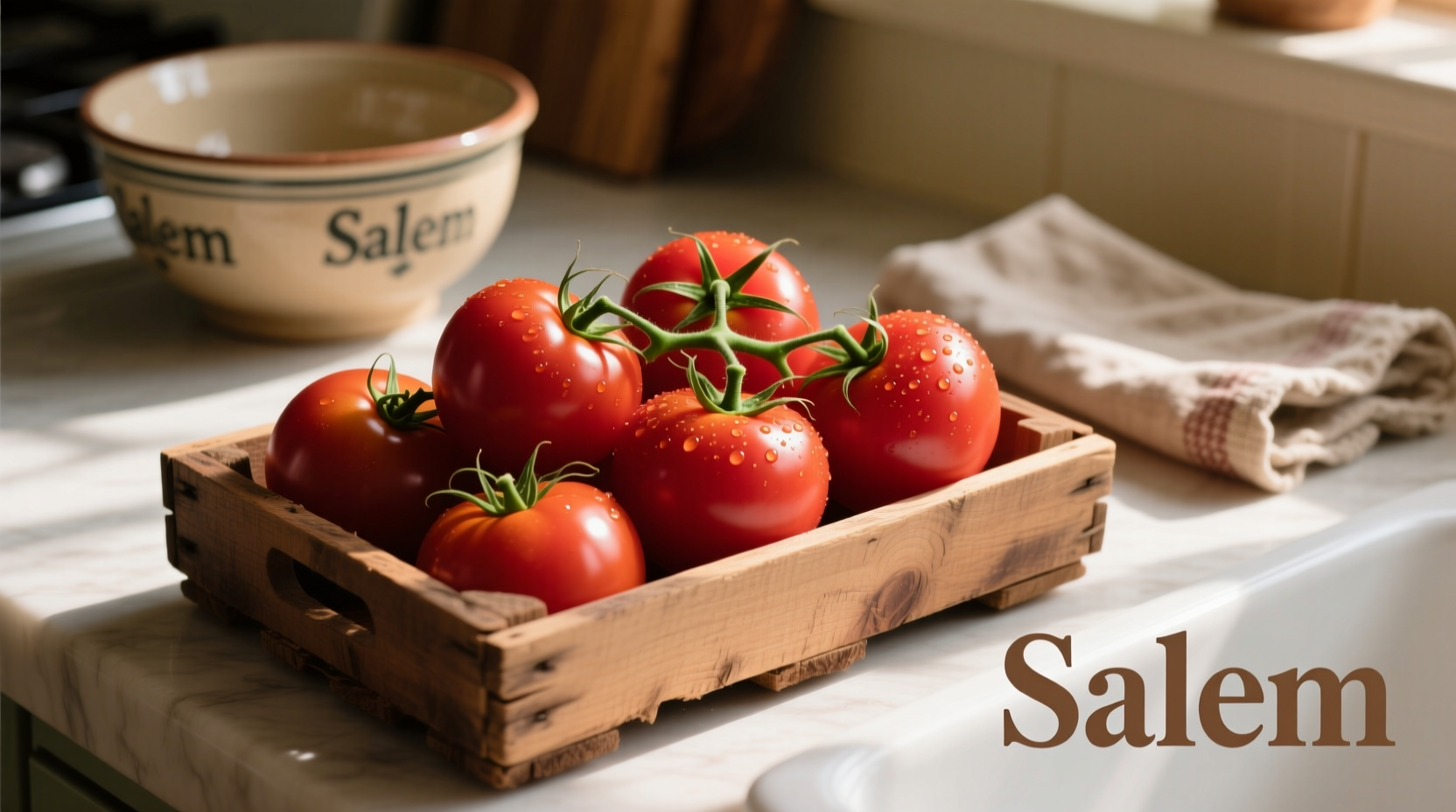Discover exactly which plum tomato varieties thrive in Salem's unique climate, when to plant them for maximum yield, and how to overcome common regional challenges. This guide provides Salem-specific growing techniques backed by agricultural research from Oregon State University Extension.
Why Plum Tomatoes Excel in Salem's Growing Conditions
Salem's Mediterranean-like climate with warm, dry summers and mild winters creates perfect conditions for plum tomatoes. These determinate varieties mature earlier than beefsteak types, making them ideal for our 150-180 day growing season. The Willamette Valley's rich volcanic soil provides excellent drainage while retaining sufficient moisture—a critical factor for preventing common tomato diseases like Phytophthora that plague wetter coastal regions.

Top 5 Plum Tomato Varieties for Salem Gardeners
Based on Oregon State University's 2024 variety trials at the North Willamette Research and Extension Center, these plum tomatoes consistently outperform others in our region:
| Variety | Days to Maturity | Disease Resistance | Yield (lbs/plant) | Best Use |
|---|---|---|---|---|
| San Marzano | 78 | Fusarium, Verticillium | 12-15 | Sauces, canning |
| Roma VF | 75 | Fusarium, Verticillium | 10-12 | Drying, paste |
| Amish Paste | 80 | Moderate | 14-16 | Fresh, sauces |
| Opalka | 82 | Good | 15-18 | Canning, fresh |
| Salad Supreme | 72 | Excellent | 8-10 | Fresh eating |
Data source: Oregon State University Vegetable Research Trials 2024
Salem-Specific Planting Timeline
Unlike coastal Oregon gardens, Salem's inland location creates distinct planting windows. Follow this timeline for optimal results:
- February 15-March 1: Start seeds indoors under grow lights (6-8 weeks before last frost)
- March 15-25: Begin hardening off seedlings
- May 15-25: Transplant outdoors after nighttime temperatures consistently stay above 50°F
- June 1-15: Apply mulch to maintain soil moisture as temperatures rise
- July 20-August 10: First harvest of early varieties
- September: Final harvest before first frost (typically October 15)
This schedule accounts for Salem's unique microclimate, which experiences warmer summer temperatures than Portland but cooler nights than eastern Oregon. The Willamette Valley's average last spring frost date is May 10, but experienced gardeners wait until USDA Zone 8b guidelines suggest—mid to late May—for tomatoes.
Soil Preparation for Salem Gardeners
Salem's predominant Jory soil (Oregon's state soil) provides excellent foundation for tomatoes but requires specific amendments:
- Mix 3-4 inches of compost into planting beds to improve drainage
- Add 5-10 pounds of crushed basalt rock per 100 sq ft for essential minerals
- Test soil pH (ideal range: 6.2-6.8); amend with sulfur if above 7.0
- Create raised beds 8-12 inches high to prevent waterlogging during spring rains
Local gardeners report significantly better results when incorporating coffee grounds from Salem's numerous cafes—this organic material helps balance our naturally alkaline soil while providing slow-release nitrogen.
Common Challenges & Regional Solutions
Salem gardeners face specific issues that differ from other Oregon regions:
Rain-Related Disease Prevention
While Salem receives less rain than Portland, spring showers create perfect conditions for early blight. Implement these proven strategies:
- Use red plastic mulch to increase soil temperature and reduce disease incidence by 30%
- Install trellises oriented north-south to maximize sun exposure on fruit
- Water at soil level in morning to allow foliage to dry before evening
- Apply copper fungicide preventatively when temperatures reach 70°F with high humidity
Heat Management During Summer
Salem's occasional heat waves (above 90°F) can cause blossom drop. Protect plants with:
- 30% shade cloth during extreme heat
- Drip irrigation maintaining consistent soil moisture
- Afternoon mulching with straw to keep roots cool
Harvesting for Peak Flavor
Plum tomatoes reach optimal flavor when harvested at the "breaker stage"—when 30-50% of the surface shows color change. In Salem's climate, this typically occurs:
- Early varieties: Late July
- Main season varieties: Mid-August
- Late varieties: Early September
Store harvested tomatoes at room temperature away from direct sunlight. Never refrigerate fresh tomatoes as it destroys flavor compounds. For best results, harvest in the morning when sugar content is highest.
What to Do With Your Abundant Harvest
Salem's plum tomato bounty lends itself perfectly to regional preservation methods:
- Sun-drying: Our dry August/September weather creates ideal conditions
- Salsa making: Combine with local peppers for authentic Northwest flavors
- Canning: Follow National Center for Home Food Preservation guidelines for safe processing
- Freezing: Blanch and freeze whole for winter sauces
Consider donating excess to the Salem Harvest organization, which collects backyard produce for local food banks—last year they distributed over 1.2 million pounds of fresh produce to families in need.











 浙公网安备
33010002000092号
浙公网安备
33010002000092号 浙B2-20120091-4
浙B2-20120091-4